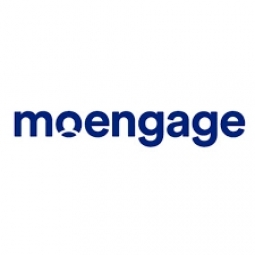Tiket.com Boosts Customer Engagement and Reduces Churn by 30% with Automated Flows & Triggered Emails

Technology Category
- Functional Applications - Product Lifecycle Management Systems (PLM)
- Networks & Connectivity - Radio Access Network
Applicable Industries
- Aerospace
Applicable Functions
- Procurement
About The Customer
Tiket.com is a pioneering online travel agent (OTA) in Indonesia. They offer an all-in-one reservation system, making them the perfect choice for booking flight tickets and hotels online. Their booking flexibility and uniformity allow them to actively acquire new users through multiple channels. The company is committed to providing a seamless and personalized user experience to every user on their app, which has been instrumental in improving purchases, repeat purchases, and reducing user churn.
The Challenge
Tiket.com, a leading online travel agent in Indonesia, was grappling with the challenge of reducing user churn and re-engaging inactive or dormant users. The company was also keen on improving the Lifetime Value (LTV) of its customers. The primary goal was to reduce overall user churn by increasing first and repeat purchase rates and re-engage inactive or dormant users. The challenge was to devise a strategy that would not only retain existing customers but also attract new ones through multiple channels. The company needed a solution that would allow them to offer personalized user experiences and improve purchases, repeat purchases, and reduce user churn.
The Solution
Tiket.com turned to MoEngage to activate their customer engagement strategy. They segmented customers based on purchase history, category purchased, and recency of app usage. Using MoEngage Flows, they automated cross-channel campaigns to these segments, engaging users through email and push notifications. With MoEngage’s recommendation engine, they personalized their offers based on the user’s browsing behavior to reduce abandonment. Tiket.com segmented users based on their lifecycle stages of “First Purchase”, “Repeat Purchase” and “Inactive or Dormant” and created cross-channel campaigns that delivered personalized messages based on their browsing and purchase history. They ran a cross-channel campaign using push notifications and email to encourage users who abandoned cart. They used the user’s search history and location to understand their last browsed product(s) and offered discounts on them. For repeat purchases, they used MoEngage Flows to encourage repeat purchase through a cross-channel campaign across email and push notifications. For re-engaging inactive users, they ran custom email campaigns to re-engage with them and push them to revisit the app.
Operational Impact
Quantitative Benefit

Case Study missing?
Start adding your own!
Register with your work email and create a new case study profile for your business.
Related Case Studies.

Case Study
Airbus Soars with Wearable Technology
Building an Airbus aircraft involves complex manufacturing processes consisting of thousands of moving parts. Speed and accuracy are critical to business and competitive advantage. Improvements in both would have high impact on Airbus’ bottom line. Airbus wanted to help operators reduce the complexity of assembling cabin seats and decrease the time required to complete this task.

Case Study
Aircraft Predictive Maintenance and Workflow Optimization
First, aircraft manufacturer have trouble monitoring the health of aircraft systems with health prognostics and deliver predictive maintenance insights. Second, aircraft manufacturer wants a solution that can provide an in-context advisory and align job assignments to match technician experience and expertise.

Case Study
Aerospace & Defense Case Study Airbus
For the development of its new wide-body aircraft, Airbus needed to ensure quality and consistency across all internal and external stakeholders. Airbus had many challenges including a very aggressive development schedule and the need to ramp up production quickly to satisfy their delivery commitments. The lack of communication extended design time and introduced errors that drove up costs.

Case Study
Accelerate Production for Spirit AeroSystems
The manufacture and assembly of massive fuselage assemblies and other large structures generates a river of data. In fact, the bill of materials for a single fuselage alone can be millions of rows of data. In-house production processes and testing, as well as other manufacturers and customers created data flows that overwhelmed previous processes and information systems. Spirit’s customer base had grown substantially since their 2005 divestiture from Boeing, resulting in a $41 billion backlog of orders to fill. To address this backlog, meet increased customer demands and minimize additional capital investment, the company needed a way to improve throughput in the existing operational footprint. Spirit had a requirement from customers to increase fuselage production by 30%. To accomplish this goal, Spirit needed real-time information on its value chain and workflow. However, the two terabytes of data being pulled from their SAP ECC was unmanageable and overloaded their business warehouse. It had become time-consuming and difficult to pull aggregate data, disaggregate it for the needed information and then reassemble to create a report. During the 6-8 hours it took to build a report, another work shift (they run three per day) would have already taken place, thus the report content was out-of-date before it was ever delivered. As a result, supervisors often had to rely on manual efforts to provide charts, reports and analysis.

Case Study
Developing Smart Tools for the Airbus Factory
Manufacturing and assembly of aircraft, which involves tens of thousands of steps that must be followed by the operators, and a single mistake in the process could cost hundreds of thousands of dollars to fix, makes the room for error very small.







